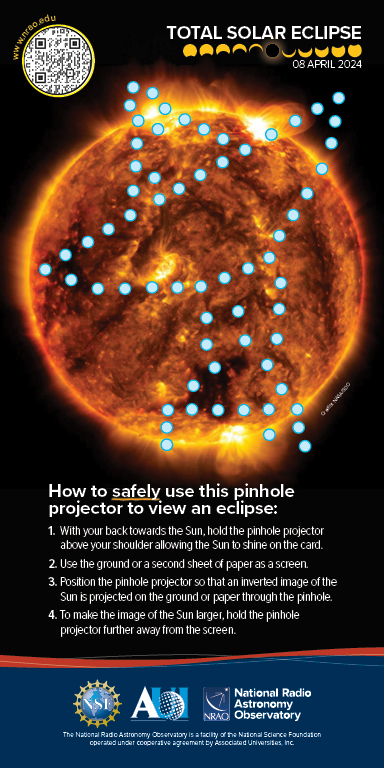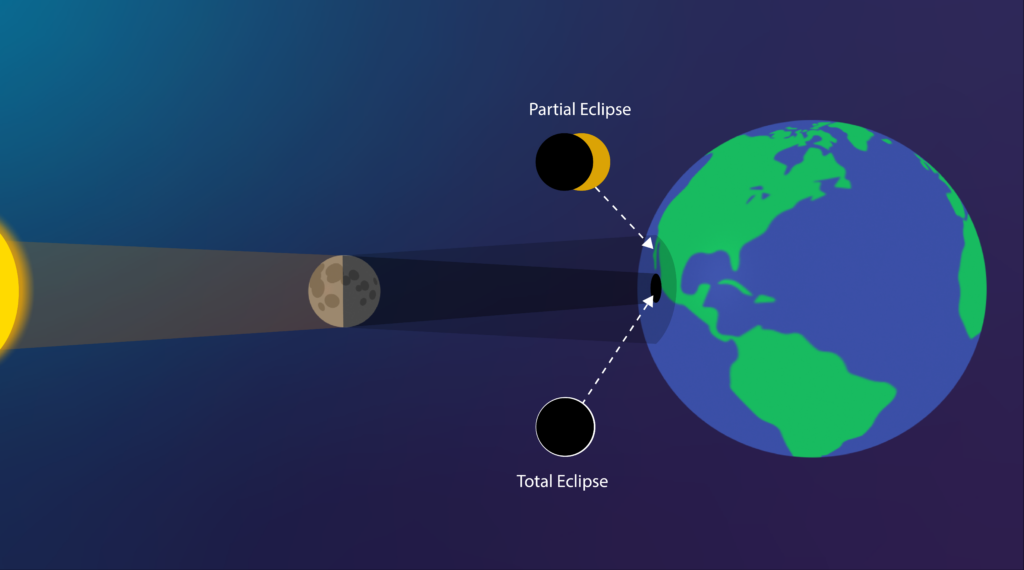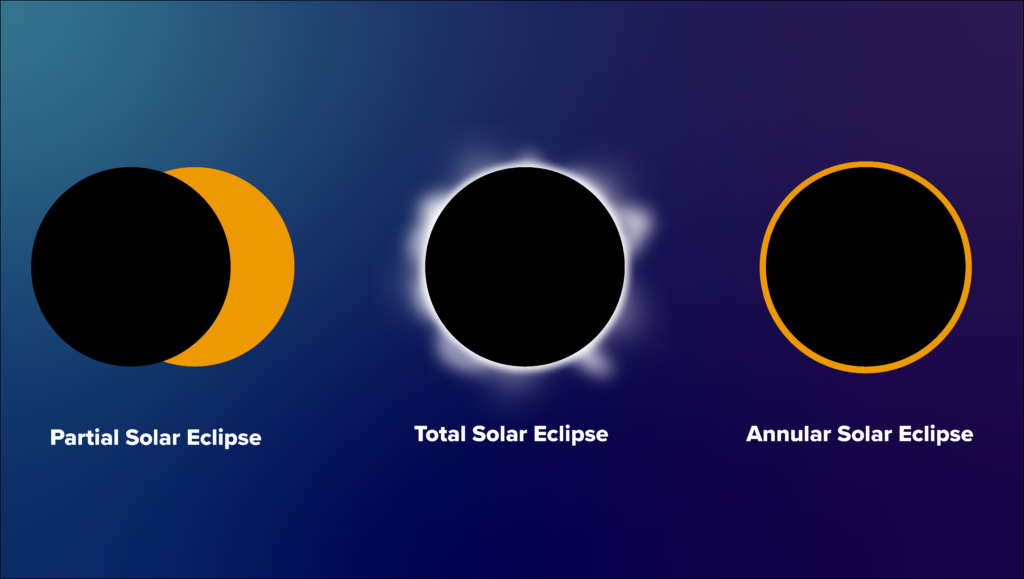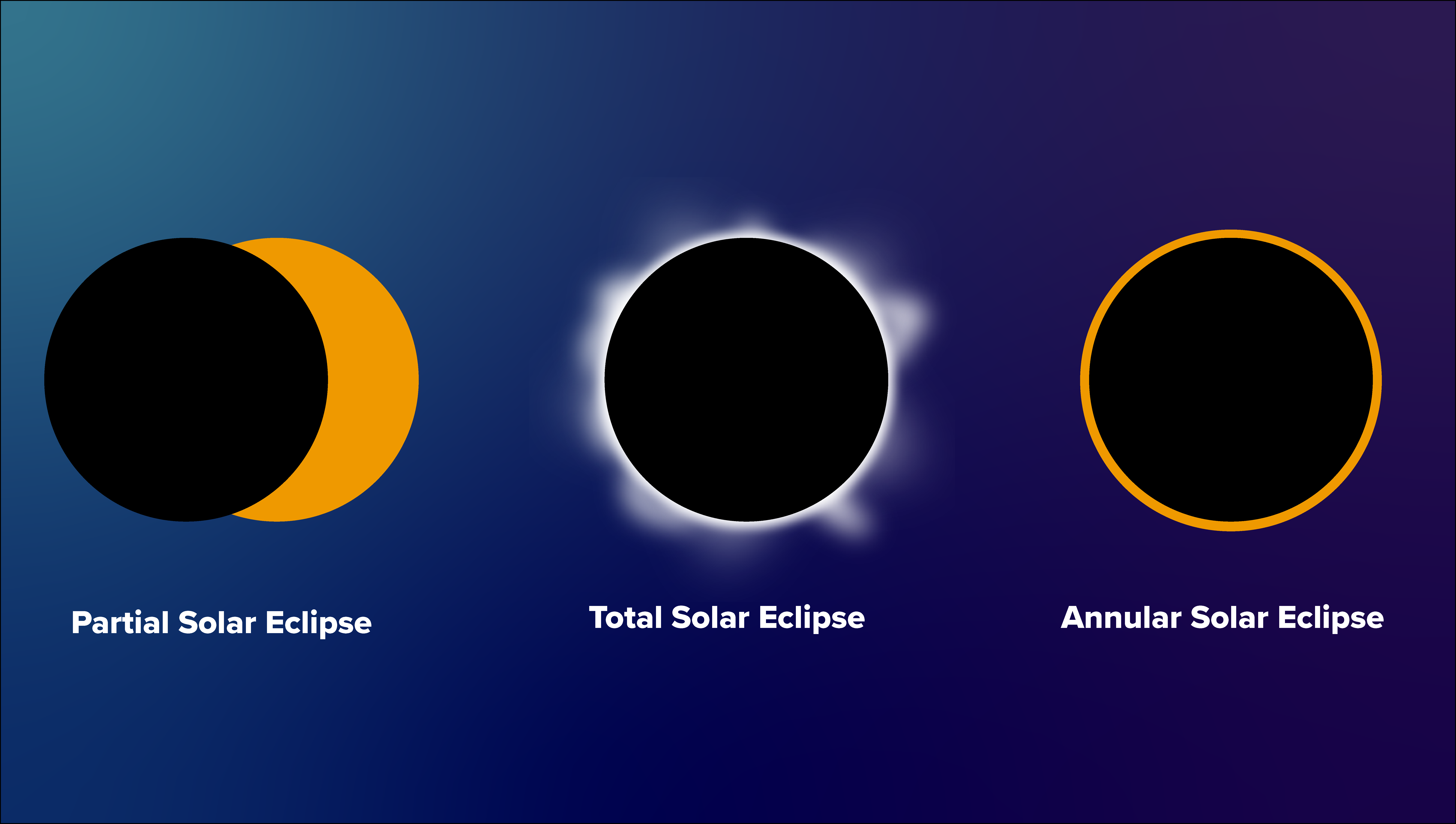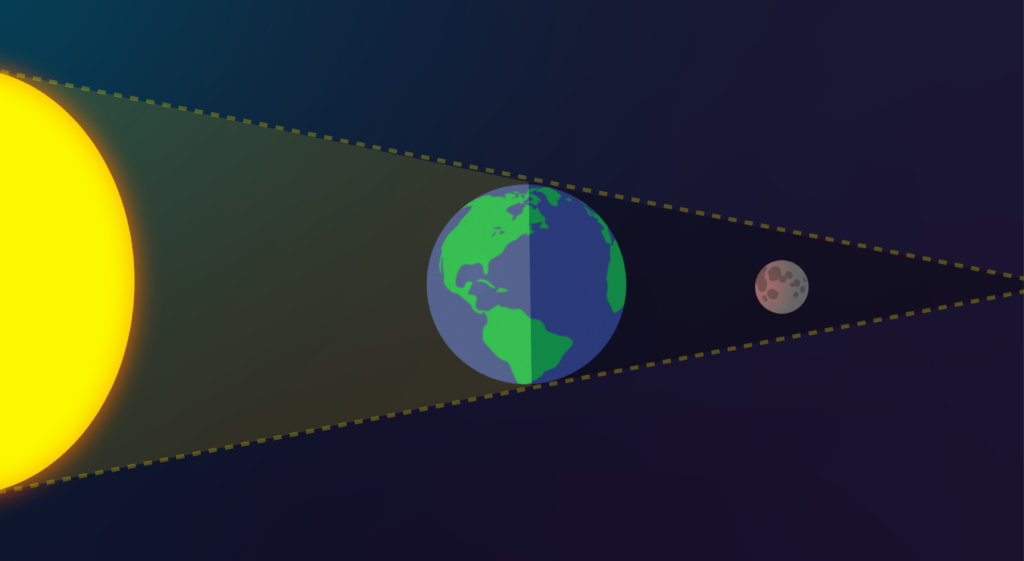An eclipse is an amazing celestial event which has filled humans with wonder and awe throughout history. As astronomers have studied eclipses, they have introduced a great deal of terminology to describe the various types and parts of an eclipse. You can find definitions regarding the two categories of eclipses below.
What is an Eclipse?
An eclipse is an astronomical event that occurs when one heavenly body such as a moon or planet moves into the shadow of another heavenly body. This alignment of three celestial objects is known as a syzygy (pronounced SIZ-uh-jee).
Solar Eclipse
A solar eclipse occurs when the Moon moves between the Sun and Earth. The Moon blocks the sunlight from reaching Earth. The Moon’s shadow falls onto Earth. Solar eclipses happen every 18 months somewhere on Earth and last for only a few minutes.
You CANNOT safely view a solar eclipse without protective eye gear.
There are three types of solar eclipses:
-
Total solar eclipse
A total solar eclipse occurs when the Sun, Moon, and Earth are in a direct line. The Moon completely blocks the Sun and the sky will darken as if it were night. A total solar eclipse is only visible to a small area on Earth. This area is the umbra and often referred to as the path of totality.
-
Partial solar eclipse
A partial solar eclipse occurs when the Sun, Moon, and Earth are not exactly aligned. The Moon partially blocks the Sun and the Sun appears to have a dark shadow on part of its surface.
-
Annular solar eclipse
An annular (an-yə-lər) solar eclipse occurs when the Sun, Moon, and Earth are exactly aligned but the Moon is farthest from Earth. The Moon does not completely block the entire view of the Sun. The result creates a “ring of fire” effect where the Moon obscures all but an outer ring of the Sun.
During a solar eclipse the Moon casts two shadows on Earth.
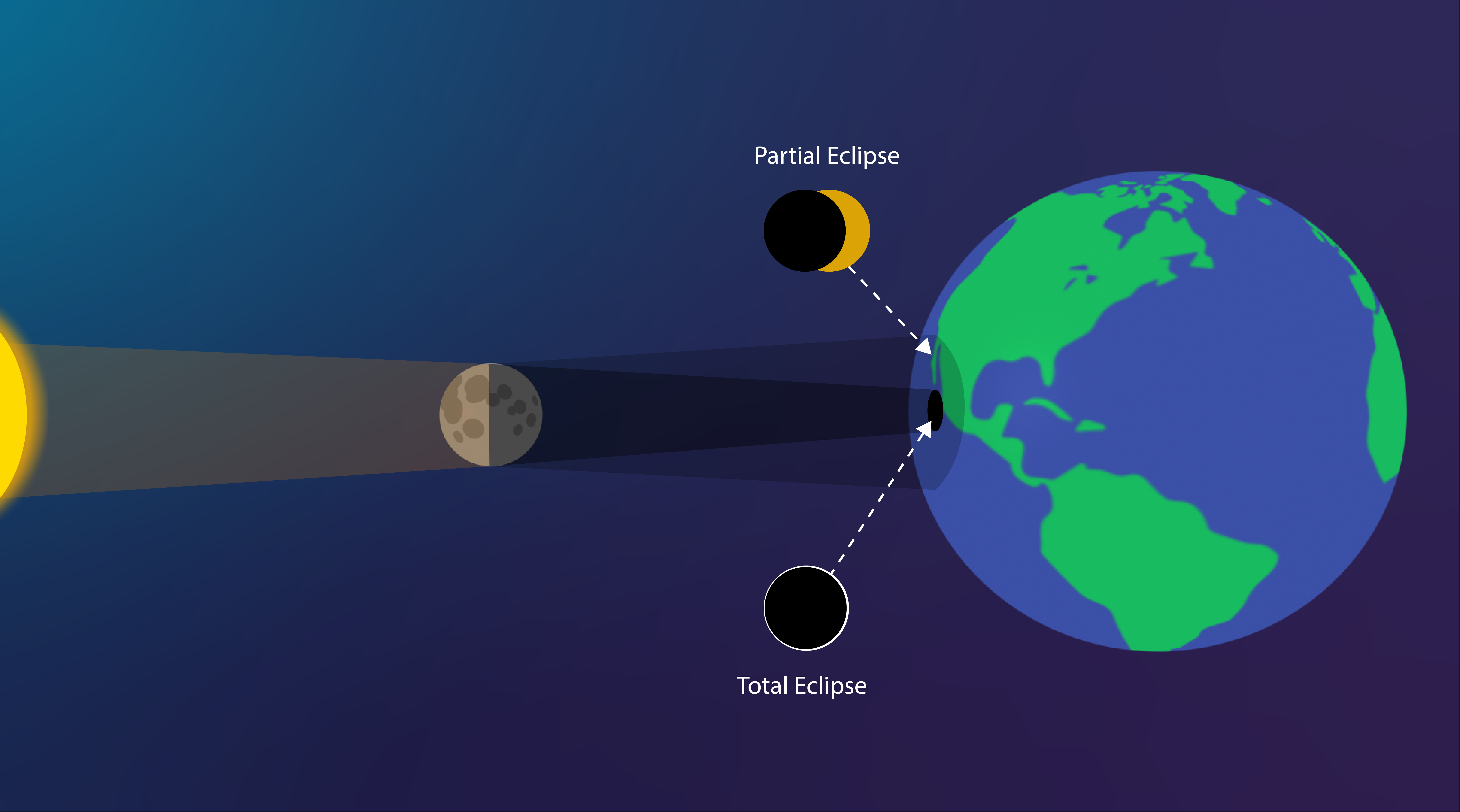
-
Umbra
The umbra (əm-brə) is the smaller dark, inner shadow of the Moon. If you are standing in the umbra you will see a total solar eclipse and are in the path of totality.
-
Penumbra
The penumbra (pə-ˈnəm-brə) is the outer, pale shadow. If you are in the penumbra you will see a partial solar eclipse.
Lunar Eclipse
A lunar eclipse occurs when the Earth moves between the Sun and the Moon. The Earth blocks the sunlight that is reflected by the Moon (this sunlight is what causes the Moon to shine). The Earth’s shadow falls on the Moon.
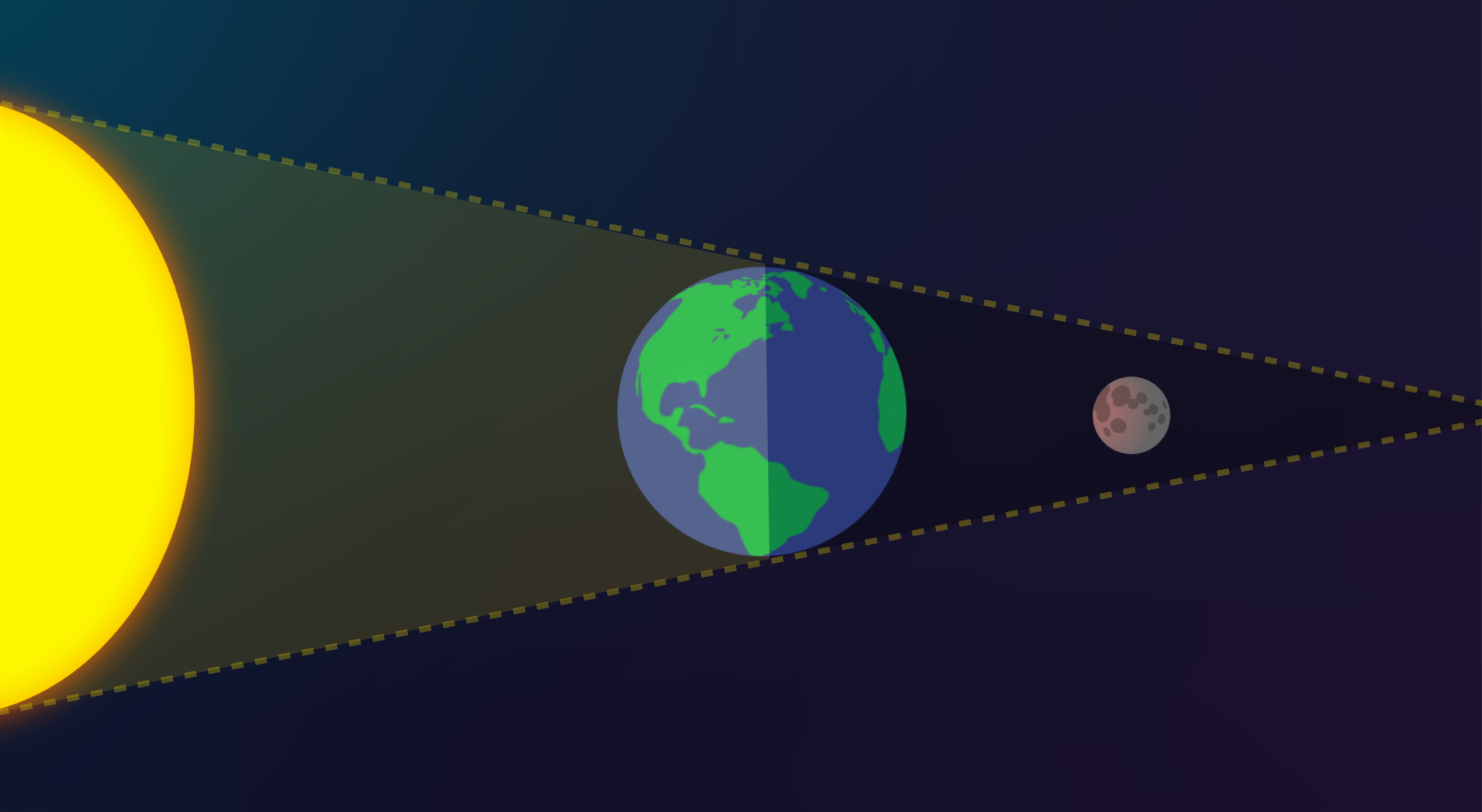
You CAN safely view a lunar eclipse without protective eye gear.
There are two types of lunar eclipses.
-
Total lunar eclipse
A total lunar eclipse occurs when the Moon and Sun are on exact opposite sides of Earth. The Moon will appear red to people on Earth. This is because some sunlight still reaches the Moon but it passes through Earth’s atmosphere, which filters out most of the blue light.
-
Partial lunar eclipse
A partial lunar eclipse occurs when part of the Moon enters Earth’s shadow. The Moon will appear very dark on the side facing Earth. What you see from Earth depends on how the Sun, Earth, and Moon align.
Safely view an eclipse with a pinhole projector you can print yourself!
Download a printable version here.
Stay Safe!
- Never look at the Sun directly without protective eye gear. Sunglasses, binoculars, and telescopes do NOT count as protective eye!
- Always keep your back towards the Sun while looking at a pinhole projection.
Read how to safely view an eclipse here.
